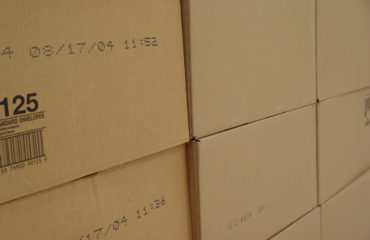Want to design the ultimate local SEO plan?
Did you know that 76% of people who search for something locally with their smartphones visit a business to buy within a day?
If you haven’t included a local SEO strategy in your online presence, you’re missing out on a massive chunk of revenue. Going local is no longer just a good idea; it’s a necessity.
If you already have some experience with good-old-fashioned SEO, adding a local component is relatively easy. If you don’t, it’s still a mechanical process. It will take you some time, but don’t worry—anyone can do it.
In the sections below, we outline the process in easy-to-follow steps. Make sure to stick with the guide, and don’t skip any steps.
When you’re ready to blow your competition out of the water, read on.
Claim Your Google My Business
If you haven’t heard of Google My Business, it’s a tool to manage your presence across all Google platforms. That includes searches and maps. If you use Google Maps, you’ve seen the icons hovering above businesses.
Well, Google My Business is the way you make your business show up on those maps.
Google also happens to own the two largest search engines in the world: Google and YouTube. If you want to make the greatest online impact, you’ll ensure Google knows you’re local.
Begin by heading to the website link above. Once there, type in your business name. Then, follow the steps to claim your business.
Make sure to include a business phone number at which customers can reach you during operating hours. If you own a brick-and-mortar store and you deliver, make sure you set a service radius.
After you set up your page, create Google posts and encourage customers to post Google reviews.
We can’t stress enough the importance of local business reviews for ranking on Google. They’re critical. Make sure you check back and respond to customer reviews frequently.
These steps will guarantee Google knows your location, and they have the side benefit of boosting your overall page rank. Keep in mind that it takes months for Google to catch up with the changes you’ve made.
Shoot for the slow SEO marketing strategy if you want to win with Google.
On-the-Page SEO Planning
If you’ve already used an SEO website strategy, then phrases like “keywords” and “image tags” should be second nature. If you haven’t, you may want to start with this general SEO primer as well as this local SEO primer.
Like old-fashioned SEO, local SEO also requires keywords.
And just as with old-fashioned SEO, the guidelines for using keywords is constantly evolving. Long gone are the days of keyword stuffing.
If you want your business to rank locally, choose the area you want to rank for. Is it a city? Or perhaps a county? Or maybe it’s a suburb?
Choose one. Now include that city, county, or suburb in the following places:
- Your H1 header
- Your page’s introduction
- One of your H2 headers
- Your Conclusion
Search engines grow smarter each year, and more aware of keyword overuse. As such, we recommend you avoid using your location in other spots on your page too often.
If you have more than one brick-and-mortar store, make certain you design a page with different local keywords for each location. It’s the only way to get ranked for more than one.
Also make sure to include your business name, address, and phone number in the footer section.
Design for the 3-Pack
It used to be the local 7-pack, but Google has truncated it. Now it’s the local 3-pack. It shows up on Google search results, toward the top of the page, surrounded by a rectangular box.
The 3-pack gives a list of the top three business matching the user’s search criteria. The pack lists the business names, addresses, phone numbers, and geolocations.
Each is clickable, so they’re optimized for mobile devices.
With Google’s recent changes to pack information, they now include more information. At a glance, you can now find business hours. The pack often shows an “open,” “closing soon,” or “closed” status. Google is still optimizing the 3-pack, so update your information monthly.
Consistency Across the Web
Outdated information is the biggest problem business owners face.
When they design their local SEO marketing strategy. Specifically, old information about their business’s address, phone number, and description.
This is imperative if you’ve owned your business for many years, it’s changed hands or changed locations.
It’s called a NAP, or name, address, and phone number. And it needs to be consistent across the web.
So where is this information usually stored?
It’s in web directories. Usually, these directories are ones you haven’t even signed up for. They run much like yellow pages in a phone book.
Type your business name into a Google search query and see what comes up. Then look at the results to find out which directories list your business.
Afterward, head to each directory to make sure every detail in your NAP is the exact same.
It’ll remove any confusion that Google web crawlers might otherwise have.
Include Schema
What is Schema, you ask? It’s a type of structured data. When you use Schema, you give search engines the details they need in order to create rich snippets.
What are rich snippets, you ask? Remember the 3-pack? It’s a type of rich snippet.
Others include things like information on music albums, people, recipes, products, and events.
With Schema, search engines make your business NAP, ratings, and reviews into a rich snippet. It’s especially convenient for those who use mobile devices. Then users have all the relevant details they need at a glance.
You can use the Google Structured Data Testing Tool to get you started.
What’s Next?
Now that you have the blueprints for the ultimate SEO plan, you can get started. We mean now. Grab something to keep track of notes and dive right in.
Start by writing down your NAP and business description. Then head to Google My Business and other web directories to fill in your info. Then head back to your website to fill in keywords and design your schema.
Cheers, you’ve done it. Please take five minutes to browse our epic library full of other SEO articles. So long and good luck!





